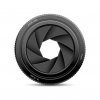raratt
Well-Known Member
Perhaps it is his ambition to become a pillar of the community.
BOO!
Perhaps it is his ambition to become a pillar of the community.
I think it's his ambition to become a pillar of the community[/QUOTE]
What could go wrong
Yeha man, I wanted to become a marine biologist at that stage. you should see my shell collection.If I'm not mistaken my Fathers book collection contains that one.
We amassed a beautiful (and substantial) shell collection starting in the Philippines & continued into S. Fla.
Yah, as in spinal. That deck is about to go to eleven.He is soon to personally learn the definition of "exceeding column load".
Bad joke.Why are you booing the post?
Good to know.Bad joke.
I thought it wasn't punny.Good to know.
i was just going by physical appearance, the conch has a ring at the edge of the eye that looks very much like a camera shutter. might just be the way it looks.I cannot find a reference, but I believe conch eyes are pretty low resolution in terms of imaging. Many crabs have very finely compound eyes that image superbly. So yes the crab can probably see it in better detail.
Cuttlefish use an active optical spoofing method to disorient crabs that they are hunting - they make waves or stripes move from mantle to tentacle tips in a way that masks their slow approach to claw-bearing dinner.


Quite possibly! I did a perfunctory search for Strombus ocular anatomy, but ~sigh~ internet.i was just going by physical appearance, the conch has a ring at the edge of the eye that looks very much like a camera shutter. might just be the way it looks.
View attachment 4274220
View attachment 4274218
I'd like to - have never been to Africa but I bet you have some kick ass shells there.Yeha man, I wanted to become a marine biologist at that stage. you should see my shell collection.



I'd like to - have never been to Africa but I bet you have some kick ass shells there.
Speaking of shells I found this calcified Queen Conch in a Calusa shell mound on the SW side of Florida back in the 60's (on the coast near the Everglades) - you can clearly see where someone bashed the shell (pic #3 in the upper whorl) to break the animal's suction so it could be eaten.
View attachment 4274302 View attachment 4274304 View attachment 4274305

So, fish and chips..... with salt and vinegar or no?
A couple of three weeks ago my customers had a low county boil. Very good.Oh yeah! My daughter could almost eat her weight in them.

